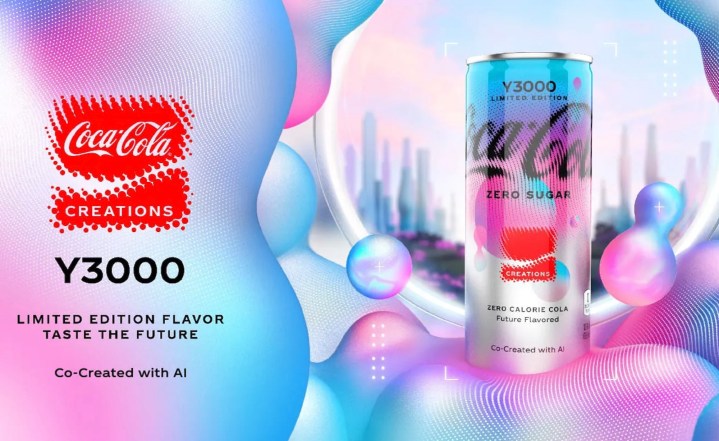
Drinks giant Coca-Cola has well and truly launched itself onto the artificial intelligence (AI) bandwagon with the release of a beverage apparently created with the help of the in-vogue technology.
Called Y3000, Coca-Cola’s limited-edition soda features a “futuristic flavor” that was designed through customer feedback. Oh, and with the assistance of AI, too.
According to a press release, the company asked Coca-Cola consumers around the world to share how they “envision the future through emotions, aspirations, colors, flavors, and more.”
After combining the myriad of perspectives with “insights gathered from AI,” Coca‑Cola said it was able to create the unique taste of Y3000.
“We hope that Coca‑Cola will still be as relevant and refreshing in the year 3000 as it is today, so we challenged ourselves to explore the concept of what a Coke from the future might taste like,” company executive Oana Vlad said in a release, adding: “We intentionally brought human intelligence and AI together for an uplifting expression of what Coca‑Cola believes tomorrow will bring.”
The zero-sugar offering will be available for a limited time in select markets, including the U.S., Canada, China, Europe, and Africa.
Going all in on marketing gobbledygook, Coca-Cola says the design of the drink’s can, the process of which also utilized AI, “showcases liquid in a morphing, evolving state, communicated through form and color changes that emphasize a positive future.” It goes on, but we’ll spare you it.
Digital Trends has reached out to the company to ask for more details about how AI was deployed in the creation of its Y3000 drink and we’ll update here when we hear back.
While AI has been around for years, buzz around the technology has gone off the charts following last November’s launch of ChatGPT, an impressive AI-powered chatbot — created by Microsoft-backed OpenAI — that’s capable of producing natural-sounding text in response to human prompts. The explosion of interest has prompted a growing number of firms to find ways of taking advantage of the technology to boost sales. Coca-Cola certainly isn’t the first food and drinks company to get in on the act. Earlier this year, Campbell Soup said it used AI to help it create its Chunky Ghost Pepper Chicken Noodle soup, while Japanese drinks giant Sapporo said AI helps it to create new beverages in half the usual time.
Editors' Recommendations
- Boston Dynamics uses ChatGPT to create a robot tour guide
- Tom Hanks warns of AI-generated ad using his likeness
- Spotify using AI to clone and translate podcasters’ voices
- Amazon deploys AI to summarize product reviews
- Nvidia is renting out its AI Superpod platform for $90K a month


